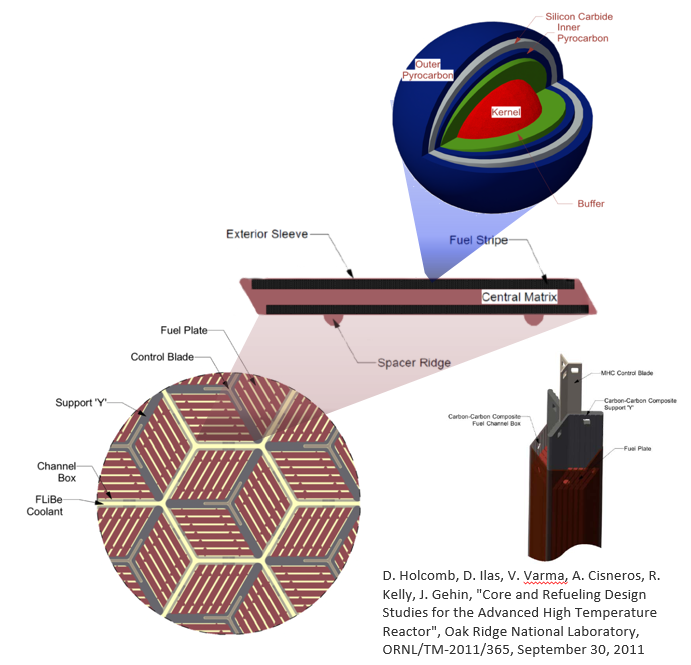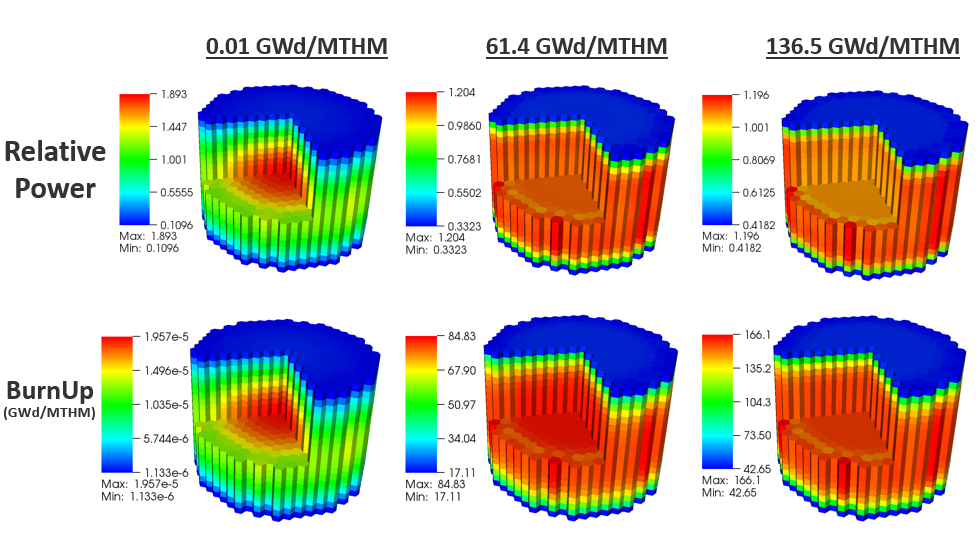Analysis of a Gen-IV Liquid Salt Cooled High Temperature Reactor
Advanced High Temperature Reactor

- AHTR proposed in 2003 for 3,400 MW power production at high temperature (650 – 750 °C) and low pressure (1 atm) operation with solid fuel form
- High temperature allows for high efficiency electricity production using Brayton Cycle and thermochemical production of hydrogen
- Low operating pressure alleviate need for thick-walled pressure vessels and passive decay heat rejection systems
- Solid fuel form helps minimize coolant radioactivity and prevent fission product corrosion mechanisms
*image: D.E. Holcomb, D. Ilas, V.K. Varma, A.T. Cisneros, R.P. Kelly, J.C. Gehin, “Core and Refueling Design Studies for the Advanced High Temperature Reactor”, Oak Ridge National Laboratory, ORNL/TM-2011/365, September 2011
Fuel Description
- Plank based, graphite moderated fuel form with LiF-BeF2 (“FLiBe”) coolant and embedded TRISO fuel particles
- FLiBe coolant, though expensive, has good heat transfer characteristics, irradiation performance, and low activation
- Plank form provides greater design C / HM ratio flexibility, allows for direct instrumentation, and has enhanced passive cooling capabilities
- Fuel dispersed in two fuel stripe regions for improved heat conduction

T-H Coupled Simulations


Employing Enhanced Accident Tolerant Claddings in LWRs
Alternate Cladding Material
- The reactivity of the design has a dependence on the cladding material due to different thermal neutron absorption properties.
- A reduction in overall reactivity can result in the inability to meet cycle length requirements of the reactor
- Depletion of UO2 fuel was calculated in the 2D lattice physics models with the cladding materials
- BWR study focused on FeCrAl and SiC as they performed better neutronically than austenitic cladding options
Full-Core BWR Simulations
- Parametric study performed with FeCrAl bundles in full-core model
- Enrichment and cladding thickness perturbed until matching base case cycle length
- Full-core simulations were consistent with lattice physics results


